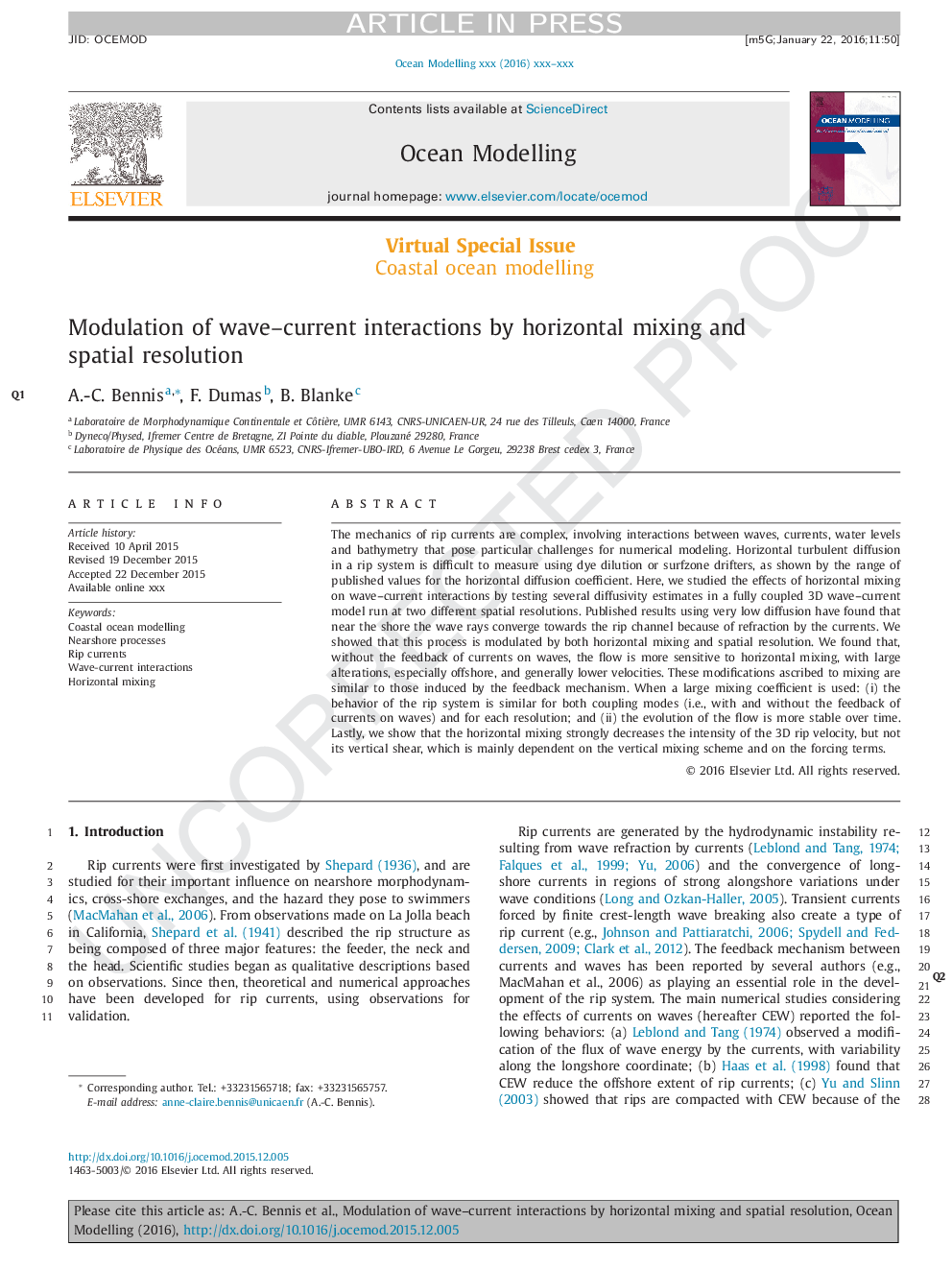| Article ID | Journal | Published Year | Pages | File Type |
|---|---|---|---|---|
| 6388071 | Ocean Modelling | 2016 | 11 Pages |
Abstract
The mechanics of rip currents are complex, involving interactions between waves, currents, water levels and bathymetry that pose particular challenges for numerical modeling. Horizontal turbulent diffusion in a rip system is difficult to measure using dye dilution or surfzone drifters, as shown by the range of published values for the horizontal diffusion coefficient. Here, we studied the effects of horizontal mixing on wave-current interactions by testing several diffusivity estimates in a fully coupled 3D wave-current model run at two different spatial resolutions. Published results using very low diffusion have found that near the shore the wave rays converge towards the rip channel because of refraction by the currents. We showed that this process is modulated by both horizontal mixing and spatial resolution. We found that, without the feedback of currents on waves, the flow is more sensitive to horizontal mixing, with large alterations, especially offshore, and generally lower velocities. These modifications ascribed to mixing are similar to those induced by the feedback mechanism. When a large mixing coefficient is used: (i) the behavior of the rip system is similar for both coupling modes (i.e., with and without the feedback of currents on waves) and for each resolution; and (ii) the evolution of the flow is more stable over time. Lastly, we show that the horizontal mixing strongly decreases the intensity of the 3D rip velocity, but not its vertical shear, which is mainly dependent on the vertical mixing scheme and on the forcing terms.
Related Topics
Physical Sciences and Engineering
Earth and Planetary Sciences
Atmospheric Science
Authors
A.-C. Bennis, F. Dumas, B. Blanke,
